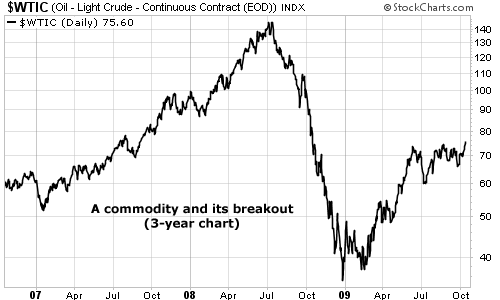| Home | About Us | Resources | Archive | Free Reports | Market Window |
|
Steve's note: Hedge-fund manager Rahul Saraogi is the future "Warren Buffett" of India. I invested in his fund in late 2008... and even though the market crashed in March, I'm up about 60%. I just received a note from him about the markets, and I wanted to share his message with you...
Money-Compounding Machines in IndiaBy
Friday, October 16, 2009
When we look at the Indian markets today, it gives us a tingling feeling at the bottom of our hearts...
We see a market with demographics, demand, entrepreneurship, rule of law, the English language, functioning capital markets, and a culture of minority equity ownership. Above all, we see a market that is giving us the ability to build positions in the compounding machines of the 21st century at prices that are unimaginably cheap. So quite honestly, we don't think it matters what the Sensex (India's Dow) is going to do over the next week or month or year. We don't think it matters whether the U.S. economy will enter a double dip recession or not. It does not even matter when or by how much central banks will raise interest rates. We just need to accumulate holdings in these exciting companies – these compounding machines – and sit tight for a very long period of time. India continues to be considered (with other emerging markets) as a risk play relative to developed markets, going up and down based on risk taking and risk aversion. In order to make sure that our compounding machine is not interrupted by periods like October 2008, we construct our portfolio with stocks of companies that will continue to perform even if the stock markets were to shut down for a period of time. And in order to make sure that we are not forced to fold our hand, we avoid leverage at all costs. We seek to find good companies at attractive prices and then just hang on to them. Most of our time is spent avoiding and ignoring the noise and excitement around us. A lot of people know the right thing to do but many of them are carried away by the noise and emotion around them. We are very fortunate to have excellent partners who share our investment philosophy and have enabled us to implement this compounding machine. We love what we do and to borrow from Warren Buffett again, we "tap dance to work very morning." Regards, Rahul Saraogi Chennai, India
Further Reading:
China And India's Tuesday Bust: A Local's Perspective Market NotesA COMMODITY AND ITS BREAKOUT
After four months of chopping sideways, crude oil is enjoying what traders call a "breakout."
Breakouts are one of the pillars of common-sense chart analysis. A breakout is simply when an asset makes a new high for a given time period. It can be a short period, like two weeks... or longer period, like six months. The "Turtle Trading" method is famous for making billions of dollars with breakouts (read our friend Michael Covel's site for a lot of great info on the subject). After watching oil suffer a huge decline in 2008, we noted how the fuel built a "floor" around $38 in February. We then noted its bullish breakout in March... a breakout that resulted in huge gains for many oil stocks. And this week, we must note that oil just broke out to a new yearly high above $75. We can't know how far this breakout will take oil. It could run to $80... $100... or, as Jim Rogers says, $200 per barrel. But we can note that oil "wants" to go higher right now. We can also brush up on oil-service names, Canadian oil sands producers, and energy-focused denizens of the Canadian Venture Index. A $20 move in oil will result in major gains here. 
|
In The Daily Crux
Recent Articles
|

